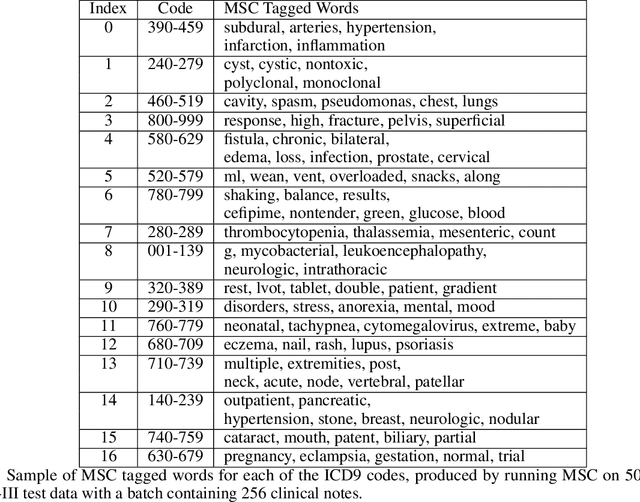Medical Segment Coloring of Clinical Notes
Paper and Code
Jan 26, 2021



This paper proposes a deep learning-based method to identify the segments of a clinical note corresponding to ICD-9 broad categories which are further color-coded with respect to 17 ICD-9 categories. The proposed Medical Segment Colorer (MSC) architecture is a pipeline framework that works in three stages: (1) word categorization, (2) phrase allocation, and (3) document classification. MSC uses gated recurrent unit neural networks (GRUs) to map from an input document to word multi-labels to phrase allocations, and uses statistical median to map phrase allocation to document multi-label. We compute variable length segment coloring from overlapping phrase allocation probabilities. These cross-level bidirectional contextual links identify adaptive context and then produce segment coloring. We train and evaluate MSC using the document labeled MIMIC-III clinical notes. Training is conducted solely using document multi-labels without any information on phrases, segments, or words. In addition to coloring a clinical note, MSC generates as byproducts document multi-labeling and word tagging -- creation of ICD9 category keyword lists based on segment coloring. Performance comparison of MSC byproduct document multi-labels versus methods whose purpose is to produce justifiable document multi-labels is 64% vs 52.4% micro-average F1-score against the CAML (CNN attention multi label) method. For evaluation of MSC segment coloring results, medical practitioners independently assigned the colors to broad ICD9 categories given a sample of 40 colored notes and a sample of 50 words related to each category based on the word tags. Binary scoring of this evaluation has a median value of 83.3% and mean of 63.7%.
 Add to Chrome
Add to Chrome Add to Firefox
Add to Firefox Add to Edge
Add to Edge